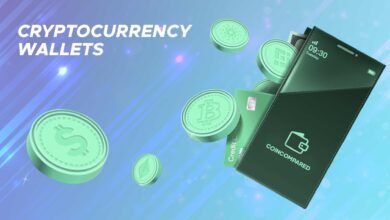
Following the creation of Bitcoin (BTC), altcoins provided a rival to the most well-known cryptocurrency. Altcoins now make up around 80% of the cryptocurrency market. Additionally, there are presently more than 5,000 alternative coins in use. On the other hand, compared to more established cryptocurrencies like Bitcoin and Ethereum (ETH), investment in altcoins has a higher risk. Users of altcoins have the chance to generate substantial profits, particularly those who understand how to maximize the revenues from the altcoins they already own. This may be viewed by users as a brief guide for novice altcoin investors.
This article explains the terminologies in plain language and covers a variety of topics, such as what an altcoin is, how to purchase them across various platforms, and how to sell them.
There is a tonne of methods to participate in the market with cryptocurrencies. Over 6,000 cryptocurrencies are traded on over 250 exchanges globally as of this writing. Every day, new cryptocurrencies emerge as older, less reliable ones fade away. The economy is booming. Consumers, corporations, governments, and investors from all walks of life are joining the crypto gold rush.
BTC represented more than 70% of the market capitalization of all cryptocurrencies as of September. Even if BTC is extremely well-liked, there are other ways to make money. Alternative coins, sometimes known as “altcoins,” continue to be a vibrant and varied aspect of the bitcoin
What are Altcoins?
The term “Altcoin” stands for “Alternative Coin.” All cryptocurrencies other than Bitcoin (BTC) are referred to as altcoins. Examples include Litecoin (LTC), Uniswap (UNI), Dogecoin (DOGE), Zcash (ZEC), and Cardano (ADA).
Numerous cryptocurrencies have been introduced since the debut of Bitcoin in 2009, and new ones are constantly emerging. These Bitcoin alternatives started departing from the Bitcoin consensus method further as they started to incorporate different configurations of privacy features, functions, and supply schedules. Investors perceive alternative coins as having greater usefulness since they are more valuable and tempting than their original counterpart, Bitcoin, because of the additional services they offer.
The following are some of the altcoins that are currently most popular on the market.
1. Bitcoin (BTC)
By market cap, Ethereum is the largest altcoin and the second-largest cryptocurrency after Bitcoin. Due to its potential for price stability, many investors no longer consider it to be an altcoin; it is more risk-adjusted than most altcoins and is quite like Bitcoin.
Furthermore, Ethereum was the first blockchain to include smart contracts, which paved the way for decentralized finance (DeFi) and the unique financial instruments that have followed and are still in use today. In contrast to Bitcoin, which is primarily a transactional protocol, Ethereum is seen as a genuine money protocol.
Ethereum can also be used to lend, borrow, short, long, and other functions that are not possible on the basic layer of Bitcoin. Unlike Bitcoin, Ethereum serves as a ledger for users to create decentralized apps (DApps) utilising their native tokens (ETH).
2. LTC, or Litecoin:
Litecoin, a derivative of the original Bitcoin protocol, is often known as the silver alternative to Bitcoin’s gold. It offers a new hashing algorithm (Scrypt) and processes block more quickly, giving it a production capacity that is four times more than that of Bitcoin. It has been disregarded as a redundant (and ultimately pointless) Bitcoin fork, nonetheless.
3. Stellar (XLM)
Stellar concentrates on cross-border financial transfers, in contrast to most cryptocurrencies. Distributed ledger technology (DLT) is used by Stellar to trade value across various boundaries before converting cryptocurrencies into currency.
4. Bitcoin (BTC)
A well-known digital payment system that supports cryptocurrency is called Ripple (XRP). One of the most widely used cryptocurrencies, it has a consensus technique that is distinct from Bitcoin’s customary proof-of-work (PoW) mining method.
5. Unicode (UNI)
The first decentralized exchange, or DEX, is called Uniswap, and it runs on the Ethereum blockchain. Uniswap thus takes advantage of the ERC-20 algorithm that is built within its platform. Due to its open-source nature, it has inspired several imitative rivals in the market, including PancakeSwap (on the Binance Smart Chain) and Sushiswap (also on Ethereum).
6. (DOT) Polkadot:
Dr. Gavin Wood, one of the Ethereum co-founders, is the creator of the Polkadot (DOT) cryptocurrency. Because it is mostly dependent on peer-to-peer research, like Cardano, Polkadot is a blockchain that has a lot of potential. However, unlike Cardano, which has a testnet on its blockchain, Polkadot first launches its experimental features on the Kusama chain for testing.
Where Can I Find Altcoins?
Market activity has increased because of the rapid growth of Bitcoin-altcoin exchange platforms brought on by the launch of various new cryptocurrencies. Where to acquire small-cap altcoins, however, is still a problem for most investors. The term “small cap” describes cryptocurrencies with a market cap of less than $1 billion (about $3 per person in the US). When investing in cryptocurrencies, it is wise to classify them according to market cap as a rule of thumb. Although this is not a hard and fast rule, and user experiences may vary, a greater market cap tends to imply a safer investment.
Trading altcoins is now possible on a variety of sites. However, the privacy policies and functionality offered by each of these platforms vary. Therefore, a variety of factors, such as buyer preferences, determine the best cryptocurrency exchange.
Although various exchange platforms have been the target of fraud and glitches, many users have also suffered losses as a result. Therefore, it is the responsibility of each investor to trade on a trustworthy exchange. Additionally, if an investor decides to engage in direct trades with another investor in a private setting, they should take the time to find trustworthy counterparties. Before committing money, one of the greatest strategies to protect their investments is to do thorough research on every platform and trader.
Avoiding lesser-known platforms in favor of established exchanges like Coinbase, Binance, KuCoin, eToro, or Crypto.com is safer for novice investors.
Users should compare the approved exchanges in their local jurisdictions and verify the exchange markets before purchasing to make sure they have access to the cryptocurrencies of their choosing.
To prevent overspending when there are less expensive solutions available, it is essential to take exchange fees into account as well.
How Can I Purchase Altcoins?
Although the methods may slightly vary depending on the site, buying cryptocurrency is generally a simple process.
Advanced traders might even decide to buy alternative currencies directly from owners over the counter, even though exchanges are secure for beginning and aid consumers in avoiding fraud.
Determine the Investment Percentage of the Portfolio Allocation:
While several other teams have released their coins and subsequently disappeared after dumping their allotted funds on the market (also known as a rug pull), most altcoins are still in an experimental phase. As a result, a sizable portion of blockchain ventures fail fast.
Research the Best Currencies Available:
Investors can choose from thousands of alternative currencies. Several elements, such as the investor’s needs and preferences, determine whether one is eligible for investing.
Therefore, each user should educate themselves on alternative currencies linked to their preferred initiatives. They should also look over each coin’s unique attributes and choose the ones that speak to them the most.
These inquiries will direct consumers to making sound selections and selecting the best altcoin to invest in.
Convert Fiat Money into Cryptocurrency:
Many exchanges don’t have fiat on-ramp platforms and don’t allow purchases in dollars. Investors must therefore buy the supported cryptocurrencies and then exchange them for alternative cryptocurrencies on the exchange.
Select the Appropriate Trade:
Investors will need to find the exchanges that support their preferred cryptocurrency after preparing a bag of cryptocurrencies for trade on an altcoin exchange. Popular exchanges offer higher liquidity and fewer instances of fraud, making them safer for new purchasers to transact on.
Finding various cryptocurrency exchanges that provide a beneficial trading pair is therefore crucial. Users start exchanging their currencies once they choose the desired trading pair. But before making a trade, you should think about the following important issues:
- The exchange is reliable, right?
- Has the platform ever been the target of hacker attempts or bug exploits?
- How much do they charge in comparison to rivals?
Pick a Currency Pair in Step Five:
The next stage is to link an exchange to a Web 3.0 wallet that contains alternative coins. To guarantee that the user performs the transaction at the best time, it is important to note the trends of the currency pair and its performance over the previous month or a few weeks before executing the deal.
Execute the Trade in Step Six:
It’s time to execute if the market conditions appear favorable and the user is prepared to make the trade. To place an order for the desired altcoin on the exchange while trading for the first time, take the time to study how orders operate.
Verify the other Currencies are Present in the Wallet:
After the transaction is completed, the Bitcoin will already have been there in the wallet. When an exchange is centralized, a user just needs to transfer money from it to their wallet once. When it comes to DEXs, money is not held in trust by the exchange until it is given to liquidity pools, yield farming, or another DeFi instrument.
There are two types of cryptocurrency wallets: cold (sometimes known as “hard” wallets because they are hardware) and hot wallets. A user’s private keys are stored on cold wallets like Trezor and Ledger, which resemble USB flash drives. This makes it difficult for hackers to access user cash without also having physical access to the hard wallet.
Hot wallets, in contrast, are linked to and hosted online, either through a phone (such as Trust Wallet), a desktop (such as Daedalus), or a web app (such as Metamask).
Are Cryptocurrencies Users Better off Investing in Altcoins?
The hazards associated with investing in crypto assets are the same as those associated with investing in anything else. But in contrast to established markets, extreme volatility is given in nascent markets and offers significant upside potential. While it may seem like “more stable” cryptocurrencies like Ethereum have fewer risks, there is no assurance that an investment will generate higher returns.
Users should do their homework thoroughly and only invest money they can afford to lose before making an altcoin investment, especially in the more volatile options. Some advantages of investing in alternative currencies include having greater room for growth and some having intriguing value and prospective application cases. Users should be aware of a few additional hazards related to altcoin investment.
First off, there are a lot of options on the market, so trying to avoid over-diversification might be difficult. Low liquidity could have an impact on slippage and transaction costs, and selling could later provide difficulties. Almost anybody can start an altcoin. Homemade DApps could be vulnerable to security flaws.
Conclusion:
Several elements, including the motivations behind the purchase, risk aversion, and others, will determine whether people should invest in alternative currencies. As Wall Street investors like to say, “Volatility is our friend.
Altcoin prices are still closely tied to Bitcoin (BTC), so when BTC rises and falls, altcoins typically follow (after ETH), which is a pattern to keep in mind. However, users should proceed with caution when choosing an alternative cryptocurrency to invest in.
Even while general cryptocurrency prices tend to grow together, unsuccessful projects will eventually decline. And most new initiatives can fizzle out fast. On the other hand, dependable altcoin initiatives like Polygon, Cardano, Polkadot, and Ethereum have withstood the test of time and demand closer investor examination.
FAQs:
How Do I Buy Altcoins on Binance?
- Buying Guide for AltCoin (ALT)
- Install a Trust Wallet wallet.
- Establish your Trust Wallet.
- Purchase BNB Chain as your base currency, transfer BNB Chain from Binance to your cryptocurrency wallet, select a decentralized exchange (DEX), connect your wallet, and then exchange your BNB Chain for the coin you want.
Are Altcoin Purchases Secure?
The likelihood that a cryptocurrency would lose value is fairly significant, making it a dangerous investment. To reduce risk, it is safer to divide a portfolio into several risk categories, especially for investors interested in less well-known altcoins.
What Altcoin is the Best?
The decentralized economy is built on Ethereum, which is recognized as the king of altcoins. Ethereum is the preferred platform for decentralized apps (DApps) and smart contracts due to its powerful infrastructure and widespread adoption.






